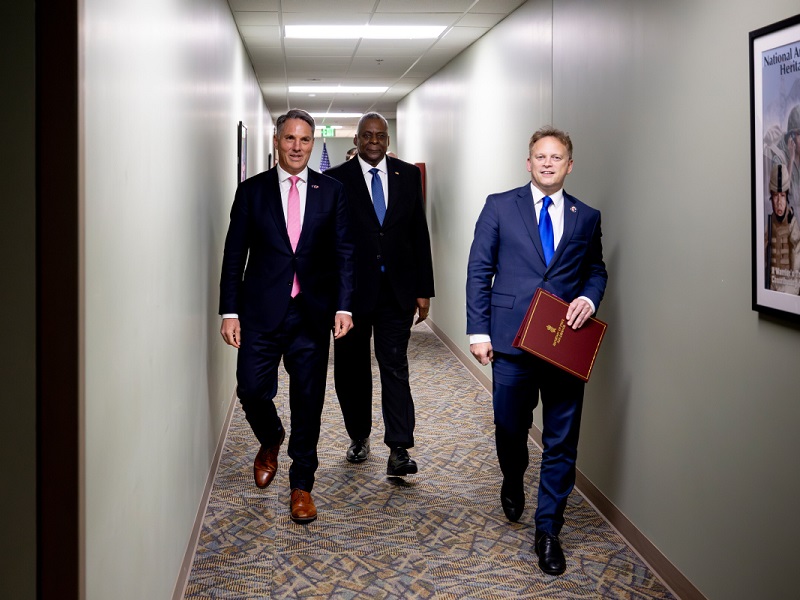The first trilateral AUKUS innovation challenge has launched in Australia, the United States and the United Kingdom to find military technologies that solve electronic warfare problems across the alliance.
All three nations simultaneously released the electronic warfare-focused challenge statement on Wednesday, with the Defence department’s Advanced Strategic Capabilities Accelerator (ASCA) leading Australia’s efforts.
The challenge kicks off a series of planned AUKUS Pillar II innovation challenges agreed by Defence minister Richard Marles and his US and UK counterparts, Lloyd Austin and Grant Shapps, in December.

According to a request for proposal issued by ASCA, the first challenge will focus on finding electromagnetic spectrum (EMS) technologies that provide a comparative advantage to Defence, both for offence and defence.
“The EMS is a heavily congested, contested, complex and competitive environment, and there is an increasing need for low cost, disposable, high volume and highly autonomous capabilities to achieve asymmetric advantage,” the challenge statement reads.
“How might Defence harness the EMS to project force to target adversaries and counter their ability to target the AUKUS partners?
In Australia, Defence has identified five technologies to allow industry to “focus resources and efforts that deliver a desirable impact to Australia’s defence capability”: sensors, closed loop targeting, electronic attack, EMS access, and EMS deception and denial.
But it will also consider other technologies that are can identify, locate and monitor targets, direct and engage the target using enabled weapons systems, and assess the attack effects, all using EMS.
Each country will select winners differently based on their national interests and individual priorities, with the best technological solutions from the challenges to be made available to all three AUKUS partners.
ASCA also said that “Defence is more interested in the ability to orientate and rapidly iterate the proposed innovative solutions to the challenge statement than with its current Technology Readiness Level”.
Up to three tenderers are expected to be selected for fixed-price contracts of $240,000 in June and be invited to develop the technology further through co-development workshops with Defence officials in July.
“It is exciting that electronic warfare is the first of the AUKUS Innovation Challenges and we look forward to seeing not only what Australian capability is available, but across our AUKUS partners as well,” Professor Emily Hilder, the head of ASCA, said.
Last month, chief defence scientist Tanya Monro said the electronic warfare challenge would be the first of “a regular drumbeat” of AUKUS innovation challenges and that the challenges represent a “profound shift” for defence industry and capability development.
“What we’re working towards is bringing together the best elements of each of our nation’s industrial bases and R&D bases,” Professor Monro said at the launch of the Defence Industry Development Strategy.
While electronic warfare is the first AUKUS-related innovation challenge to take place, ASCA has already embarked on an innovation challenge individually to find sovereign uncrewed aerial systems (UAVs).
In August, the accelerator signed contracts worth $1.2 million with companies like AMSL Aero, Bask Aerospace and SYPAQ Systems for 11 different prototype UAVs that are expected to be demonstrated next month.
Do you know more? Contact James Riley via Email.

